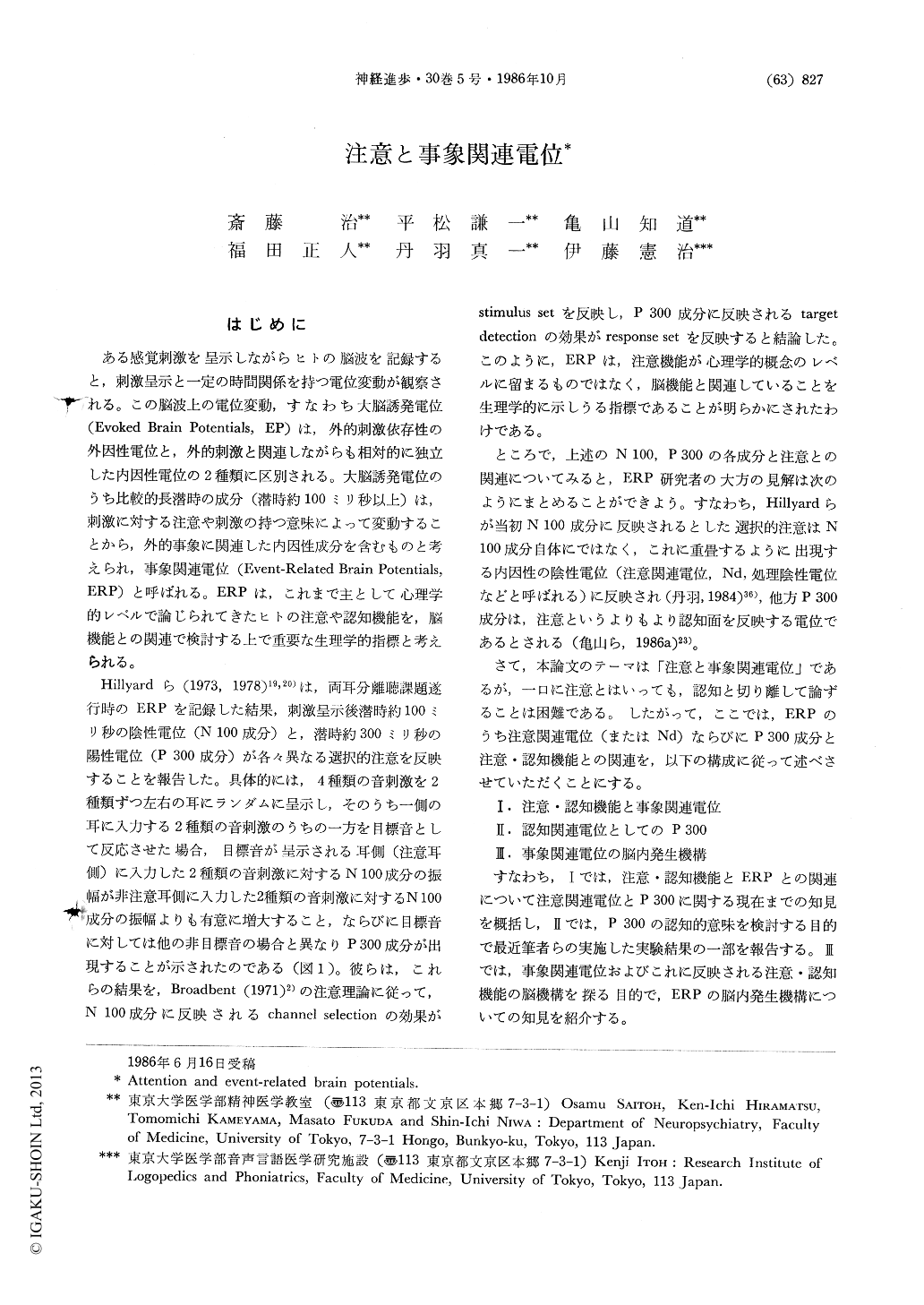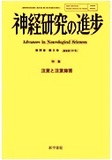Japanese
English
- 有料閲覧
- Abstract 文献概要
- 1ページ目 Look Inside
はじめに
ある感覚刺激を呈示しながらヒトの脳波を記録すると,刺激呈示と一定の時間関係を持つ電位変動が観察される。この脳波上の電位変動,すなわち大脳誘発電位(Evoked Brain Potentials,EP)は,外的刺激依存性の外因性電位と,外的刺激と関連しながらも相対的に独立した内因性電位の2種類に区別される。大脳誘発電位のうち比較的長潜時の成分(潜時約100ミリ秒以上)は,刺激に対する注意や刺激の持つ意味によって変動することから,外的事象に関連した内因性成分を含むものと考えられ,事象関連電位(Event-Related Brain Potentials,ERP)と呼ばれる。ERPは,これまで主として心理学的レベルで論じられてきたヒトの注意や認知機能を,脳機能との関連で検討する上で重要な生理学的指標と考えられる。
Hillyardら(1973,1978)19,20)は,両耳分離聴課題遂行時のERPを記録した結果,刺激呈示後潜時約100ミリ秒の陰性電位(N100成分)と,潜時約300ミリ秒の陽性電位(P300成分)が各々異なる選択的注意を反映することを報告した。
When stimuli in the outer world are processed in the central nervous system, a sequence of electrical brain potentials are elicited that begin very shortly after the stimulus onset and last for more than half a second. These brain potentials are consisted of exogenous and endogenous components. Potentials mainly affected by physical parameters of stimuli are referred to as exogenous components ; while, those affected chiefly by inner psychological events are designated as endogenous components, which can be elicited even by the missing of stimuli. These potentials, called as Event-Related Potentials (ERPs), are expected to serve as objetive eletrophysiological measures for studies of attentional and cognitive functioning in man. Clarifying attentional implications of ERPs, we have focused on two major potentials, that is Nd and P 300, in the present paper.

Copyright © 1986, Igaku-Shoin Ltd. All rights reserved.


